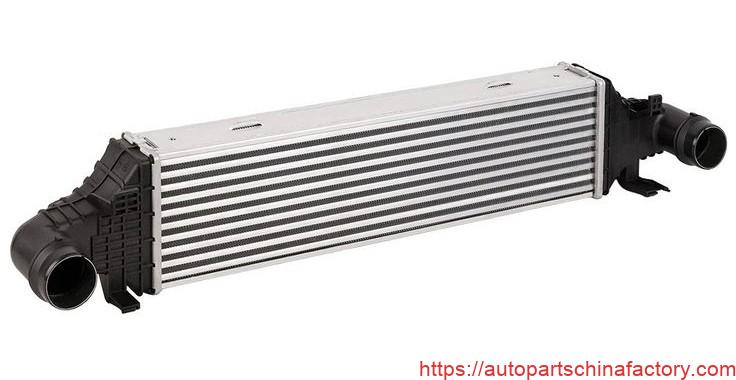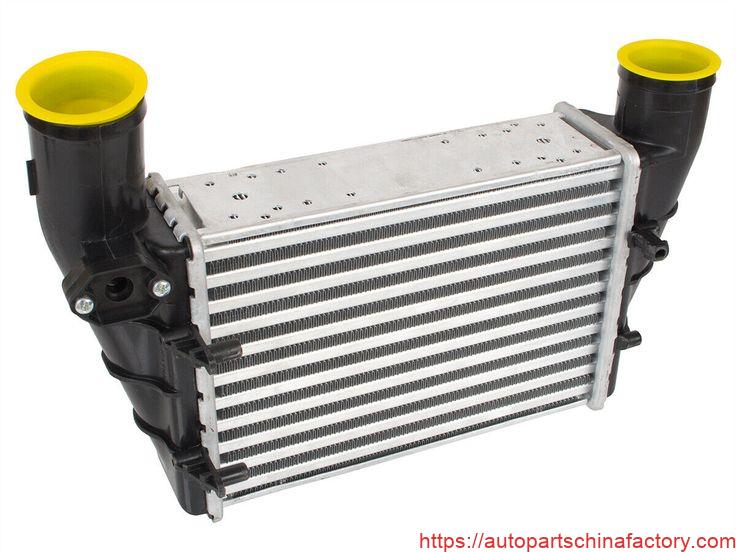- A+
如果你是汽车爱好者, 特别是带有涡轮增压或增压车辆的人, 您可能听说过一个中冷器. 但是到底是什么, 为什么对性能如此重要? 让我们深入了解汽车中冷却者的世界.

什么是汽车中冷器? (定义)
汽车中冷器 (也称为充电空气冷却器) 是一种机械装置,用于涡轮增压和增压内燃机,以在进入发动机的燃烧室之前冷却压缩空气. 当空气被涡轮增压器或增压器压缩时, 它的温度显着升高. 热空气的密度比冷空气小, 这意味着每给定体积它含有更少的氧分子. 中冷器的作用是降低压缩空气的温度, 使其密度更大、氧气更丰富.
为什么冷却器增压空气很重要? (用法)
冷却压缩空气有几个显着的好处:
- 增加功率: 更密, 较冷的空气意味着更多的氧分子进入气缸. 更多的氧气可以让更多的燃料有效燃烧, 导致更强大的燃烧冲程并增加马力和扭矩.
- 提高了燃油效率: 通过优化燃烧, 发动机往往可以实现更好的燃油经济性.
- 减少爆炸 (敲门): 热空气更容易提前点火或 "敲门," 这会损坏发动机. 冷却空气可以降低这种风险, 允许更积极的点火正时和更高的增压压力而不会造成损害.
- 延长发动机寿命: 通过减少热应力和爆炸, 中冷器有助于延长发动机部件的整体寿命.
中冷器是什么样子的? (外貌)
中冷器类似于小型散热器, 通常由翅片和管芯构成, 类似于发动机的主散热器或加热器芯. 它们通常有两个大端口用于进气和排气. 它们具有各种形状和尺寸,以适应不同的车辆布局和性能需求:
- 前置中冷器 (福米克): 位于车辆前部, 经常在保险杠后面, 以获得最大气流. 这些在高性能应用中很常见.
- 顶部安装中冷器 (TMIC): 位于发动机顶部, 通常位于引擎盖下方以吸入冷空气.
- 侧装中冷器 (中芯国际): 位于护舷井内, 通常在某些车辆上成对出现.
- 水-空气中冷器 (液-气): 使用带有冷却液和热交换器的独立冷却回路来冷却增压空气, 提供更一致的冷却,但增加了复杂性.

安装: 位置和复杂性
中冷器的安装根据其类型和车辆的不同而有很大差异.
- FMIC 安装: 这通常涉及拆除前保险杠, 可能会修改保险杠支撑, 并运行新的充电管道. 它可以是一项中等复杂的 DIY 任务,也可以是一项对专业人士而言简单的工作.
- TMIC安装: 一般比较简单, 因为它更容易获得, 通常只需要拆下发动机盖和软管.
- 中芯国际安装: 难度各异, often involving removing fender liners and connecting to existing piping.
- Water-to-Air Intercooler Installation: These are the most complex, requiring the installation of a separate pump, reservoir, and heat exchanger (radiator for the water).
Regardless of the type, proper sealing of all connections and careful routing of charge pipes are crucial to prevent boost leaks.
材料和制造地点
Most intercoolers are primarily made from 铝. Aluminum is chosen for its excellent thermal conductivity (ability to transfer heat efficiently) and its lightweight properties. The core often consists of aluminum tubes and fins, while the end tanks (the parts where the air enters and exits) are also typically aluminum, 铸造或捏造.
As for manufacturing locations, the global automotive supply chain is vast. 您会发现中冷器是在具有强大汽车零部件制造能力的国家生产的, 包括:
- 中国: 全球主要汽车零部件生产中心, 包括售后市场和OEM组件.
- 墨西哥: 北美整车厂零部件供应的重要制造基地.
- 美国: 多家专业性能零件制造商和 OEM 供应商在此运营.
- 德国: 以高品质工程和汽车零部件供应商而闻名.
- 日本: 在 OEM 和售后市场汽车零部件领域拥有强大的影响力.
- 韩国: 汽车行业零部件制造的力量不断壮大.
具体产地取决于品牌 (OEM vs. 售后市场) 以及制造商的供应链策略.
中冷器的价格范围
中冷器的成本可能因车辆而异, 中冷器类型 (前置式, 顶部安装, 水对空气), 品牌 (OEM vs. 售后表现), 和材料质量.
- 售后性能中冷器: 这些范围从 $200 到 $1,500+ 美元. 入门级直接安装售后选项可能处于低端, 虽然大, 高效率, 用于高性能应用的定制装置将处于高端.
- OEM 更换中冷器: 如果您要更换库存中冷器, OEM 零件的范围包括 $300 到 $800+ 美元, 取决于车辆.
- 水-空气中冷器套件: 这些通常是最昂贵的, 常常从 $800 并上升到 $2,500+ 美元 用于带泵的完整套件, 水库, 和热交换器.
- 安装人工: 如果你不是自己做的话, 专业安装费用范围从 $150 到 $600+ 美元, 取决于复杂性和商店价格. 前置安装通常会产生较高的人工成本.
结论
中冷器是任何强制进气车辆中不可或缺的部件. 通过有效冷却压缩空气, 它直接有助于增加功率, 提高效率, 并增强了发动机的可靠性. 无论您是想升级以获得更高的性能还是只是了解涡轮增压发动机的工作原理, 认识中冷器的重要作用是欣赏汽车工程的关键.


